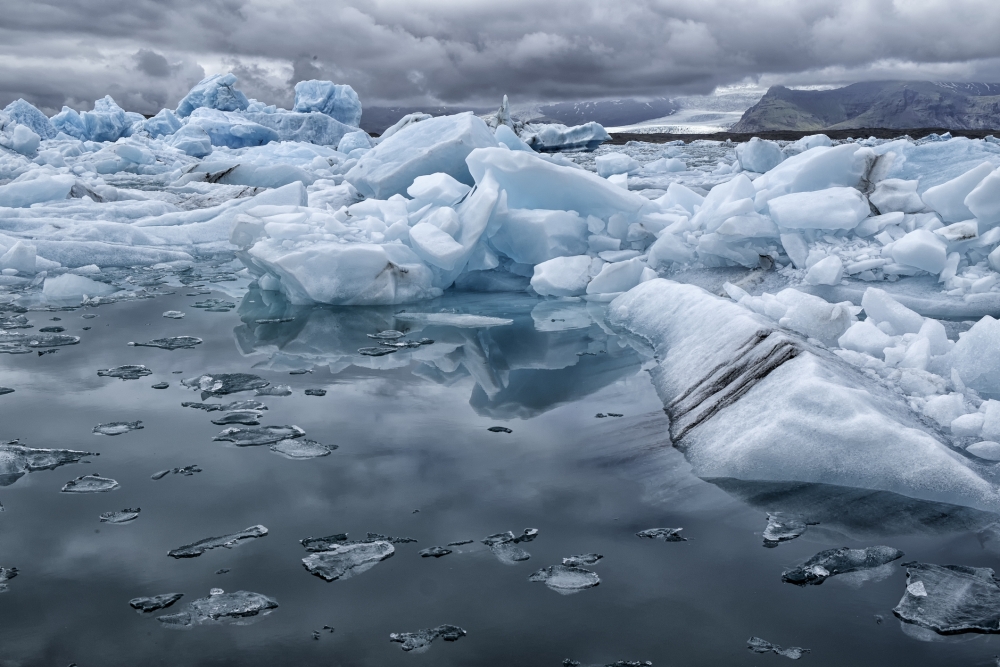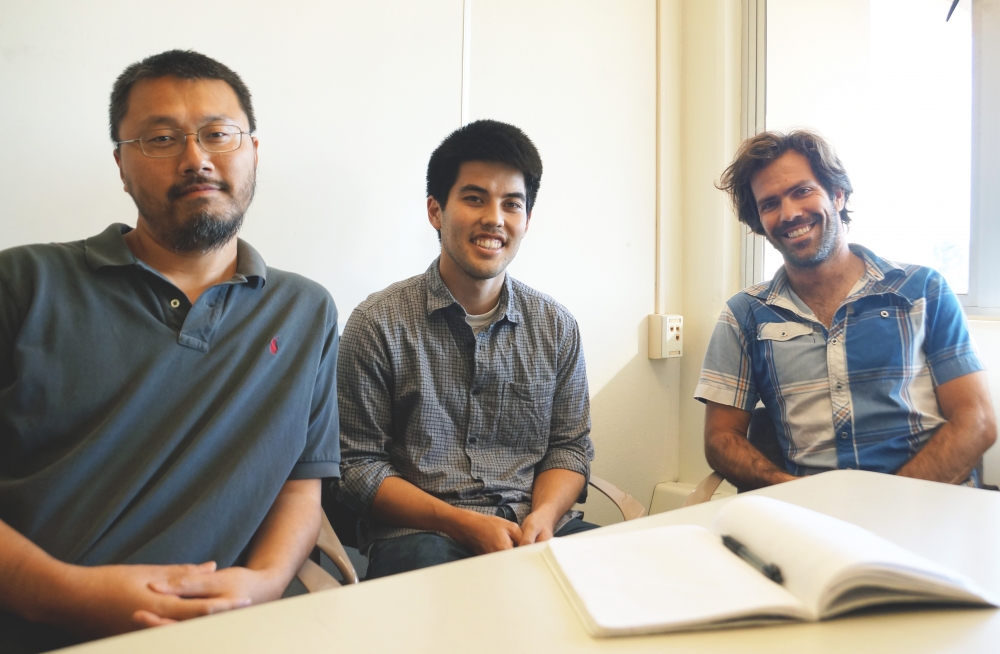
Simulation Versus Observation

As an indicator of the impacts of climate change, Arctic sea ice is hard to beat. Scientists have observed the frozen polar ocean advance and retreat at this most sensitive region of the Earth over decades for insight on the potential ripple effects on assorted natural systems: global ocean circulation, surrounding habitats and ecosystems, food sources, sea levels and more.
Despite efforts to make model simulations more closely mirror actual observations of Arctic sea ice melt, however, a gap has opened: Reports on the ground indicate the ice is melting at a much faster rate than predicted by global climate models.
“Based on this phenomenon, people have different opinions,” said UC Santa Barbara climate scientist Qinghua Ding, an assistant professor in the campus’s Earth Research Institute. The consensus of the climate science community, he said, is leaning toward the idea that the discrepancy is due to flawed modeling. “It’s something like the model has some bias; it has some low sensitivity to anthropogenic forcing,” he explained.
Ding and his group disagree. In a study titled “Fingerprints of internal drivers of Arctic sea ice loss in observations and model simulations,” published in the journal Nature Geoscience, the group says the models are just fine. About 40 to 50 percent of sea ice loss over the last three decades, they argue, is attributable to significant but as yet little-understood internal drivers — among them effects that originate partially as far away as the tropics.
“Actually, we’re comparing apples to oranges,” Ding said of the discrepancy between real-time observation and simulated Arctic ice melt driven by anthropogenic forcing. The average of models, he explained, accounts only for what effects are a result of historical radiative forcing — calculations based mostly on levels of greenhouse gases — but don’t rely on, for instance, the short-term variations in sea surface temperatures, humidity, atmospheric pressure and other factors both local and connected to other phenomena elsewhere on Earth. Such higher-frequency events often show up as noise in the repeated, individual runs of the simulations as scientists look for general long-term trends.
“Any one run of a model will have random noise,” said Bradley Markle, a postdoctoral scholar in Ding’s research group. “If you take 20 or 30 runs of a model, they will each have their own random noise, but they will cancel each other out.” The resulting value is the average of all the simulation runs without the random variability. But that random variability may also be impacting what is being observed out on the ice, in addition to the forced signal.
Due to their nature, internal variabilities are also likely to result in periods in which Arctic ice melt will appear to slow or even reverse, but in the bigger picture, climate scientists still see the eventual complete melting of Arctic sea ice for part of the year.
“There are so many reasons we focus on Arctic sea ice, but one of the main things people really care about is the timing of the ice-free summer,” said Ding, referring to a time when the northern pole will no longer be the frozen frontier it has been even in the summer.
“Right now, the prediction is that in about 20 years, we will see an ice-free summer,” Ding said. More than just a climate issue, he continued, the ice-free summer is also a societal issue, given the effects on fisheries and other food sources as well as natural resources and habitats that benefit from a frozen polar ocean. One of the things this discrepancy between simulation and observation indicates, he said, is that predictions about when this ice-free summer occurs will have to be tempered with some acknowledgement of the effects of internal variabilities.
“There’s a large uncertainty associated with this time window,” Ding said. “As we consider internal variabilities, plus CO2 forcing, we should be more cautious about the timing of the ice-free summer.”
For Markle, this situation highlights the disconnect that often occurs when talking about long-term climate trends versus short-term observations. Over the course of our human timescales of hours to days, we experience atmospheric temperature changes over several degrees, so a mean global temperature rise of one or two degrees doesn’t seem all that significant.
“Likewise, year-to-year temperature variability, such as that associated with these tropical internal variations, can be several degrees in annual average temperature in a specific area, so near the same magnitude as the centuries-long global warming signal,” he said.
An example of this relatively short-term climate variability is the well-known El Niño Southern Oscillation (ENSO), the constant tipping between the El Niño and counterpart La Niña weather systems that brings both drought and rain, scarcity and abundance to different parts of the world. More extreme ENSO-driven weather behavior is expected as the Earth’s climate seeks equilibrium in the face of an average global temperature increase of even a couple degrees.
“Just for reference, 20,000 years ago there was an ice sheet covering most of Canada during the height of the last ice age — that was a four- or five-degree annual average temperature change,” Markle said, “but it’s a huge difference.”
Ding’s research group continues to investigate the mysterious and complex internal drivers that affect Arctic sea ice, particularly those that originate in the warm, wet tropics.
“We’re mostly interested in the period from the early 2000s to the present day, where we see such strong melting,” said graduate student Ian Baxter, who also works with Ding. It’s known, he added, that the effects of changes in the Arctic are no longer confined to the region and in fact spread to the mid-latitudes — often in the form of cold weather outbreaks. The group is interested in how effects in the tropics could spread beyond that region and affect the Arctic.
“We’re trying to lay out a mechanism through which that happens,” Baxter said.



